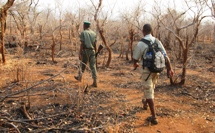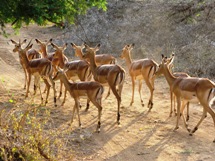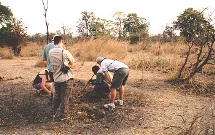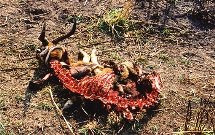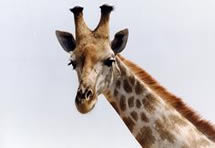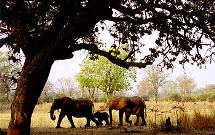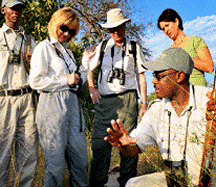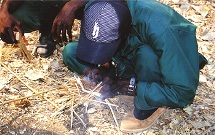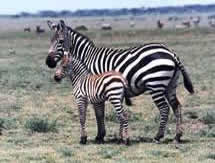
Well, yes – actually it’s the thrill of taking to your feet in the bush, in exactly the same kind of habitat, but without the feeling of protection afforded by a vehicle. Here you will be down at the same level as the wildlife, sharing its environment, not spectating at it, and experiencing the scents and sounds of wild Africa. There is little to beat the way that the adrenaline courses through your body as you experience tracking big game on foot – always keeping down-wind of course.
Perhaps the most significant way of describing a walking safari, in contrast to conventional game viewing, is that, while the latter is a holiday, the former is an adventure! Undoubtedly you will remember the walking part of your experience in Africa long after the memories of game sightings have faded away. Essentially you will feel that you have been an integral part of the life of the bush, not just observing it.
Ideally your walking safari will take place from a traditional bush camp, rather than an upmarket lodge, and your day will typically begin at dawn as you are woken by a member of the camp staff filling your bucket shower (more fun than it may sound; proper flushing loos are, however, usually provided). After a brief breakfast you will take to your feet before the day begins to heat up.
Depending on the time of year, you may walk for 3-5 hours, returning to camp only when it really gets too hot to walk. Later in the day, as it gets cooler, you may take a further, shorter, walk, before relaxing with a welcome sundowner, perhaps followed by a night drive. You don’t have to walk all the time, however: you may prefer to substitute a game viewing drive instead. It’s up to you entirely.
Carrying only cameras, binoculars and water bottles, you will set off strictly in single file, although frequently regrouping to study the various plants, insects and animal signs that you will encounter along the way. The first half an hour or so is often described as ‘reading your daily newspaper’, as you study the ground in front of you, to deduce what wildlife has passed by overnight. Indeed there is a story to be told in virtually every track and dropping that you will come across.

Conventionally the lead position will be occupied by at least one armed ranger (who will either be carrying a heavy calibre rifle, or an AK-47!), with your (unarmed) guide in second spot. In fact the guide’s responsibility is to look after your safety, while the ranger’s responsibility is actually to safeguard the wildlife that you may encounter.
You certainly won’t find him blasting off shots at every opportunity: indeed we ourselves have never known a weapon to be used, even in the hairiest of situations. Quite often the rear of your – conventionally single file – group will be taken up by a final camp member who doubles up as general carrier of water etc, and tea-boy.
Your guide will have an encyclopaedic knowledge of where you will be walking (in most cases he was brought up here), and will delight in explaining how so many plants and trees can be used for native medicines (usually including a bush version of Viagra!), and in teaching you how to identify droppings, distinguish lion from leopard tracks, and so on. He may even show off his skills by creating a camp fire using just a couple of pieces of (carefully chosen) wood, for your mid-walk tea break.
Your guide will also show you how to use the wind to disguise your scent, and to manoeuvre so as to get up close and personal with the game. When you are at close range you will find that your senses are heightened, and you become increasingly in touch with the animal you are watching, how it moves and feeds, and how it reacts to its environment.
For many a walking safari can actually be a life-changing experience, as you come to understand the difference between real life and your usual, somewhat artificial existence.
Learn more: The Various Types Of Walking Safari
And then read about our 'Walking In Zambia' concept.
